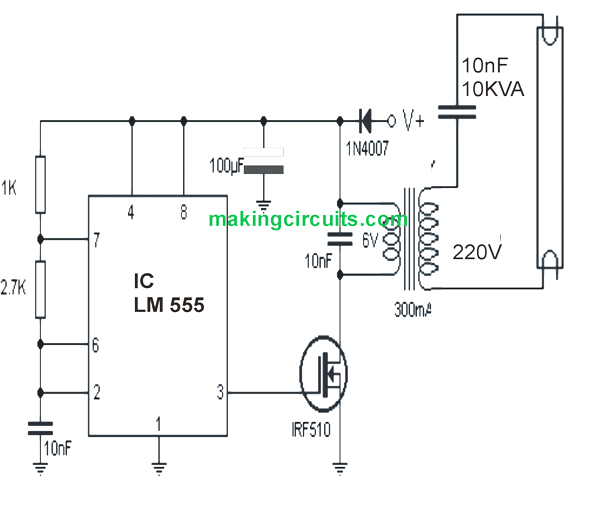In this article we will learn how to make an easy 9V fluorescent tube inverter circuit using ordinary parts such as IC 555 and a cheap 0-6V/220V step down transformer.
As shown in the diagram below, the IC 555 is wired in its most standard configuration of an astable multivibrator meaning in this mode the IC will begin generating pulses at its pin#3 at a frequency rate that may be directly dependent on the selected resistors and capacitor across its pin#6/2.
The output from pin#3 which is in the form DC high frequency is applied to an attached mosfet, and this mosfet is in turn rigged with a step down transformer’s 6V winding for executing the intended 6V to 220V DC to DC inverter circuit.

This implies that the IC 555 along with the transformer mosfet driver acts like a small DC to DC inverter for generating a 6V to 220V output.
This 220V may not exactly an AC because it lacks the negative half cycles and delivers only half wave pulsed 220V DC.
However this 220V pulsed DC becomes enough for illuminating a 9V fluorescent tube light brightly.
Therefore this simple 9V tubelight inverter circuit very efficiently cheaply enables any small fluorescent to be illuminated from a 6V battery or any 6V DC power supply.
Leave a Reply